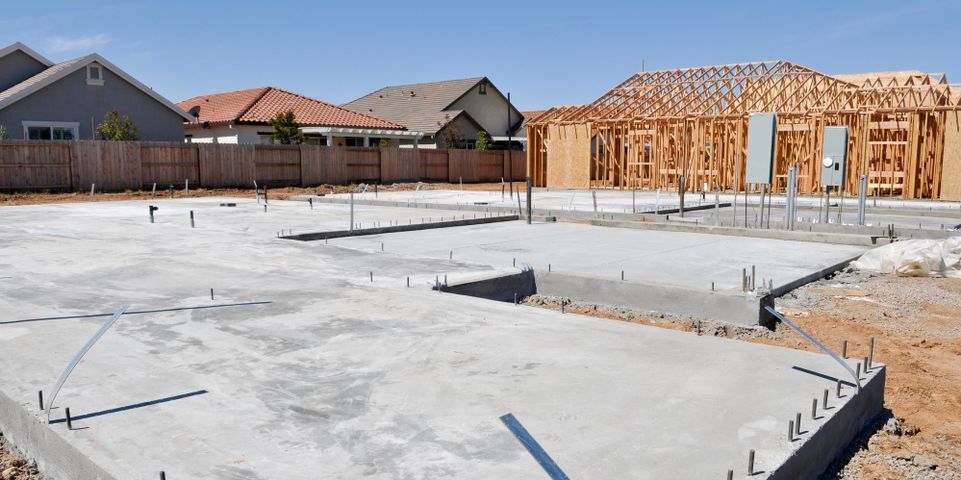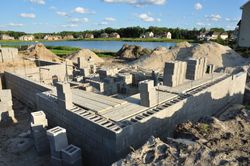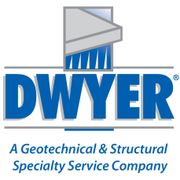
While it’s easy to see the differences between styles of houses, different foundation types are rarely noticed unless you are involved in their construction, or you need foundation repair. When you do need repairs, it’s important to understand the differences between the different types of foundational structures. Below are three basic building foundation types you might see in a construction zone.
What Are Common Types of Building Foundations?
1. Natural Stone
Stone foundations can be either fieldstone or cut quarry stone, giving them a wide variety of appearances. Natural stone is incredibly durable and far more so than man-made products like concrete or brick. Due to its natural resilience to water permeation, the natural stone retains its strength both above and below ground.
The combined price of the chosen stones, masonry grout, and labor costs make natural stone foundations less cost-efficient than newer methods, such as concrete slabs. Mortar will crumble, and sandstone may show superficial deterioration over time. It can be more difficult to lift and stabilize due to it being made up of multiple stones rather than a single, connected structure.
2. Cinder Block on a Poured Concrete Footer
 This is one of the more common residential foundations in modern construction. Cinder blocks are readily available and reduce the amount of concrete needed to pour. This method reduces the labor needed to pour a slab or poured walls.
This is one of the more common residential foundations in modern construction. Cinder blocks are readily available and reduce the amount of concrete needed to pour. This method reduces the labor needed to pour a slab or poured walls.
Outside of painting, cinder block foundations and walls don’t offer a lot of stylistic choices. Cinder block foundations are not ideal for basements because the grouted joints tend to allow moisture penetration. Unless the cinder blocks are properly reinforced with steel rebar tied into the concrete footer beneath them, houses settling and weight shifting can cause the blocks to shift.
3. Monolithic Concrete Slab
In this scenario, a concrete slab and footers were dug out and lined with a combination of steel rebar and wire for reinforcement and poured in one solid mass of concrete. Since the slab and footer are a solid unit, there is little to no allowance for shifting. This method makes building the foundation quicker since most of the labor is dedicated to one unifying task.
The cost is dependent on the regional cost of concrete, so they can be pricey. Poured concrete will always crack, whether it is in a footer, a wall, or a slab. Those cracks are usually superficial if the concrete is properly reinforced. If not, these cracks can allow moisture penetration and can impact the flooring.
If you need foundation repair, call the professionals at The Dwyer Company with locations in Lexington, Louisville, and West Chester. They’ve been in business since 1973 and specialize in shotcrete, slab jacking, and concrete. Call their corporate Ohio office at (877) 399-3726 or visit their website for a free estimate.
About the Business
Have a question? Ask the experts!
Send your question

